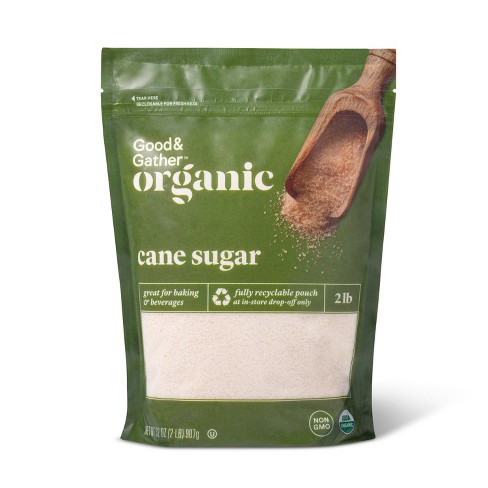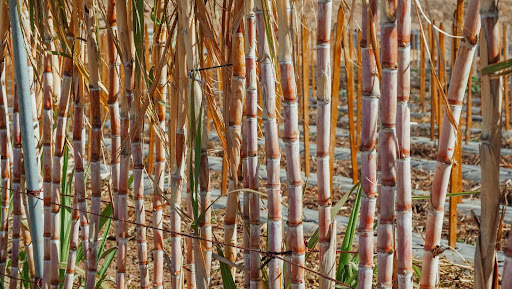Cane Sugar Processing: Conventional Methods and Modern Innovations
Cane Sugar Processing: Conventional Methods and Modern Innovations
Blog Article
An Extensive Guide to the Environmental Effect and Sustainability Practices in Walking Stick Sugar Handling
The ecological influence of walking cane sugar handling offers an intricate array of challenges that warrant careful evaluation. From soil degradation and excessive water usage to the carbon footprint related to cultivation and production, the consequences of traditional techniques are far-ranging. On the other hand, the fostering of cutting-edge sustainability procedures uses a path toward much more responsible production approaches. Recognizing the interaction in between these problems is essential for stakeholders in the industry. What specific techniques can be applied to strike an equilibrium between productivity and ecological stewardship? The solutions hinge on a better look at both the obstacles and possible services.
Summary of Walking Cane Sugar Processing
Cane sugar handling involves a collection of systematic actions that change sugarcane into polished sugar. At first, harvested sugarcane is delivered to processing centers, where it goes through cleansing to eliminate dirt and debris. Following this, the walking cane is squashed to remove juice, which is after that clarified by eliminating contaminations through home heating and the enhancement of lime.
The cleared up juice undertakes evaporation, where water is eliminated to focus the sugar content. This concentrated syrup is after that taken shape through cooling, permitting sugar crystals to form. These crystals are separated from the continuing to be syrup using centrifugation, resulting in raw sugar. To accomplish polished sugar, the raw item undergoes additional filtration procedures, which may include filtering system and cleaning to eliminate staying pollutants and shade.
The end product is after that dried and packaged for distribution. Throughout this whole procedure, keeping efficiency and quality assurance is necessary to ensure the sugar meets industry standards. Each step in walking stick sugar processing not only adds to the end product but likewise has ramifications for resource use and waste generation, setting the stage for discussions on sustainability and environmental influences connected with sugar manufacturing.
Ecological Obstacles of Manufacturing
The manufacturing of walking stick sugar provides a number of significant environmental challenges that warrant attention. One key concern is the comprehensive use of agrochemicals, including chemicals and fertilizers, which can result in soil destruction, biodiversity loss, and contamination of neighborhood water resources. The overflow from sugarcane fields often lugs these chemicals right into close-by environments, interrupting aquatic life and affecting the wellness of neighborhoods reliant on these water bodies.
One more challenge is the high power usage connected with sugarcane handling. The boiling and refining stages require significant warm, primarily created by shedding fossil fuels, adding to greenhouse gas discharges. Additionally, the large acreage needed for sugarcane growing can lead to logging and habitat devastation, additional intensifying environment change and harmful wildlife.
In addition, the labor methods in some areas increase moral worries, as workers may face inadequate working conditions and poor earnings. This situation commonly perpetuates a cycle of destitution in local neighborhoods. Cane Sugar Processing. Addressing these ecological challenges is vital for developing much more lasting practices in walking stick sugar manufacturing, ultimately profiting both the setting and the communities included in this sector
Water and Land Use Effect
Water sources and land utilization are important parts in the cane sugar market that significantly impact the atmosphere. The farming of sugarcane requires substantial water input, with quotes recommending that it can eat up to 2,000 liters of water per kg of sugar created. This extensive use water often results in exhaustion of neighborhood water sources, influencing not only the sugarcane ranches however likewise surrounding ecological communities and areas that count on the same water sources for farming and residential use.

Additionally, land use for sugarcane farming can cause deforestation and the conversion of all-natural habitats right into monoculture vineyards. This technique reduces biodiversity, interferes with regional ecological communities, and contributes to dirt degradation. The growth of sugarcane areas frequently elbows in on valuable agricultural land, developing competition for resources in between food and biofuel manufacturing.
Sustainable methods, such as enhancing watering techniques and executing plant turning, are vital to alleviate these influences. By adopting much more effective water use and land monitoring strategies, the walking stick sugar market can lower its eco-friendly footprint, guaranteeing a balance between farming performance and ecological conservation.
Greenhouse Gas Emissions
Greenhouse gas exhausts stand for a significant environmental issue within the walking stick sugar processing market, especially as agricultural methods broaden to satisfy worldwide need. The growing of sugarcane, a plant that grows in exotic environments, depends heavily on synthetic fertilizers and pesticides, which add to nitrous oxide emissions. Additionally, land-use changes, consisting of logging for brand-new sugarcane haciendas, launch co2 kept in greenery and soil.
During handling, power usage is another significant resource of greenhouse gas emissions - Cane Sugar Processing. Many sugar mills make use of fossil gas to power machinery and create warm, leading to considerable carbon impacts. Moreover, the transportation of raw sugarcane and ended up products adds layers of discharges through gas combustion check my blog in lorries
This entails evaluating present farming practices, processing techniques, and transport systems to identify areas for enhancement and reduction. Addressing greenhouse gas discharges is necessary for cultivating a more see this website sustainable walking stick sugar sector in a transforming climate.

Lasting Practices and Innovations
Sustainable techniques and developments are increasingly crucial in the cane sugar handling industry as stakeholders look for to decrease ecological effects while keeping efficiency. One substantial improvement is the execution of integrated plant management, which enhances source use by incorporating soil monitoring, pest control, and plant turning methods. This strategy enhances return while minimizing chemical inputs and protecting dirt health.
Additionally, the fostering of sustainable power resources, such as biomass from sugarcane residues, has obtained traction - Cane Sugar Processing. By converting waste items right into energy, processing centers can reduce their reliance on nonrenewable fuel sources, therefore lowering greenhouse gas discharges
Water monitoring practices have likewise seen renovations through the recycling and reusing of water in processing plants, substantially lowering freshwater consumption. Advancements in modern technology, such as accuracy agriculture, enable farmers to keep track of plant wellness and source use better, making sure lasting farming techniques.
In addition, certification programs like Fair Trade and Rainforest Alliance motivate ecologically accountable farming methods and advertise social equity within the supply chain. By welcoming these lasting methods and advancements, the walking cane sugar handling market can improve its durability and contribute positively to environmental stewardship.
Conclusion
The environmental impact of walking learn this here now cane sugar handling offers considerable difficulties, including soil degradation, high water intake, and greenhouse gas exhausts, along with honest issues associated to labor practices. Addressing these concerns via sustainable practices, such as integrated plant administration, sustainable energy fostering, and water recycling, is necessary. By advertising ecologically responsible and socially fair approaches in sugar production, the industry can minimize its negative impacts, ensuring an extra lasting future for both areas and communities associated with this field.
Walking stick sugar handling includes a series of methodical steps that change sugarcane into polished sugar. Each step in walking cane sugar processing not just contributes to the last product yet also has effects for resource usage and waste generation, setting the phase for discussions on sustainability and ecological impacts linked with sugar production.
Greenhouse gas discharges represent a considerable ecological worry within the cane sugar processing sector, especially as farming practices increase to meet worldwide need.Sustainable techniques and developments are significantly important in the walking cane sugar processing market as stakeholders look for to reduce ecological influences while maintaining efficiency.The ecological impact of walking stick sugar handling presents considerable obstacles, consisting of soil deterioration, high water consumption, and greenhouse gas exhausts, alongside honest problems related to labor techniques.
Report this page